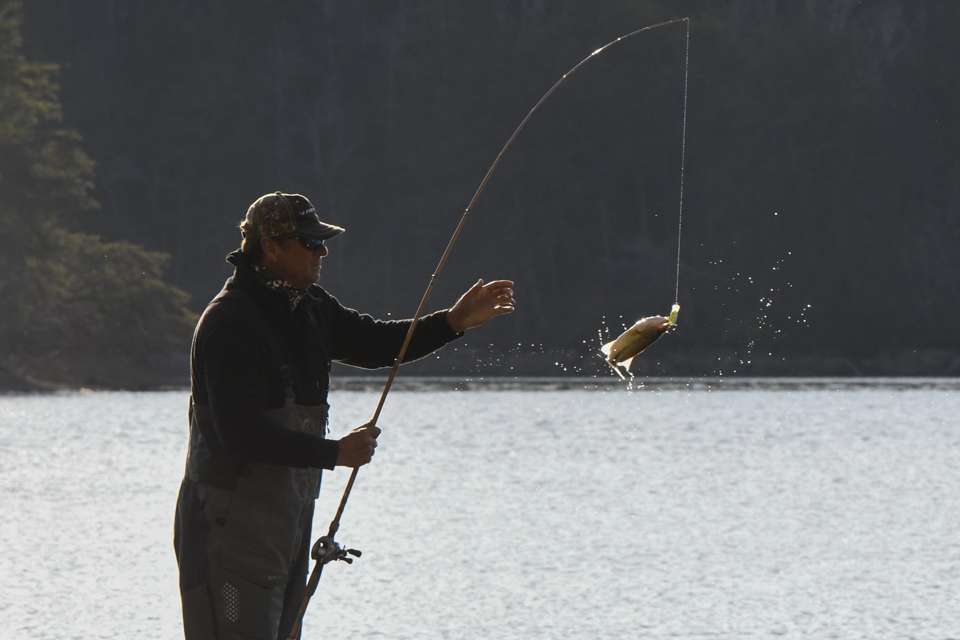
We get a lot of questions about fishing line. Anglers want to know which is best to use – braid, fluorocarbon or mono. Each type has its benefits and fits well with some techniques.
When you choose your line, think about the properties of each type and how it might help or hinder a specific lure presentation.
As most anglers know, fluorocarbon sinks while braid and monofilament tend to have flotation properties, so they will put a bow in your line when they are pulled to the bottom. However, those characteristics can work in your favor when fishing lures on top or in mid-depths.
Monofilament has a lot of stretch whereas braid has none and fluorocarbon has a little. That means the latter two give you more feel and direct contact with the lure.
Braid’s advantage is it is super strong in very small diameters but is highly visible in clear water.
In addition to its sinking properties, one huge advantage of fluorocarbon is it’s quite a bit less visible than the other two lines.
Size of line can affect lure performance as well. When finesse fishing, lighter line tends to allow the bait to move more naturally. I use the smallest diameter I can without fear of breaking off in snags or on big fish.
I consider my line usage into two categories: dragging and winding. Generally speaking, a good rule of thumb is — when dragging a bait on bottom — the heavier the bait the less the line size affects it. So with heavier baits, I choose heavier lines.
And when dragging, I typically prefer straight fluorocarbon because it sinks and my bait gets to the bottom faster. With braid and monofilament, you get a bow in the line, and it’s more difficult to keep the bait on bottom. You never get a good feel because the line is fighting against you.
And, because of the sensitivity of fluorocarbon with its minimal stretch, you not only stay in contact with the lure and bottom but you can get better hook-ups at the end of long casts.
When winding baits like crankbaits, I rig the same crankbait with three different line sizes and with either monofilament or fluorocarbon. Smaller diameter lines allow a crankbait to run deeper, so if I’m fishing an area where the bottom is at different depths, I can switch to rods with a different rod/line setup to keep my lure in the strike zone. Again, if I don’t want a lure to run too deep, I will opt for monofilament over fluorocarbon.
If you only have one choice, though, stick with fluorocarbon.
When fishing topwaters, I usually go with monofilament unless I need to make long casts where I choose braid because of its floating characteristic and incredible strength in small diameters. However, I believe topwaters work more naturally on monofilament. Years ago I fished with a guy in New York. We both fished Pop Rs, but he was kicking my butt. I was using 12 pound and he was using 20, but because the 20 was more buoyant, it made his lure work differently than mine.
So, the point is smaller line isn’t always better. Another example is when I throw a heavier ChatterBait over grass I use 20-pound fluorocarbon instead of 15 because the 20 allows me to fish the bait shallower. Again, bigger line drags and sinks slower in the water.
When drop shotting vertically, I will spool with 10-pound braid and an 8-pound leader.
Would smaller line on the leader make a difference? Aaron Martens uses 7 pound and swears it gets him more bites and makes a difference.
What’s best for you? Experiment with different lines to see how each bait reacts and what fish want that day.
You’ll develop confidence in your own system, and that confidence will allow you to be a more efficient and effective angler.





